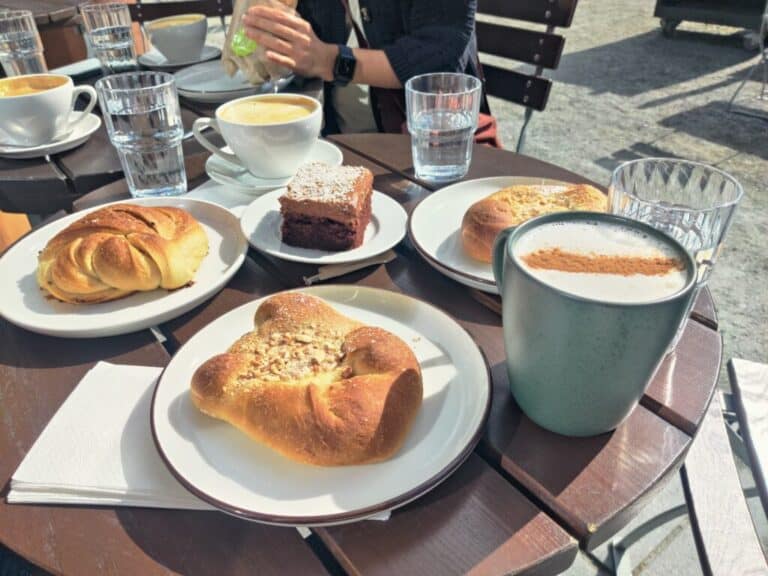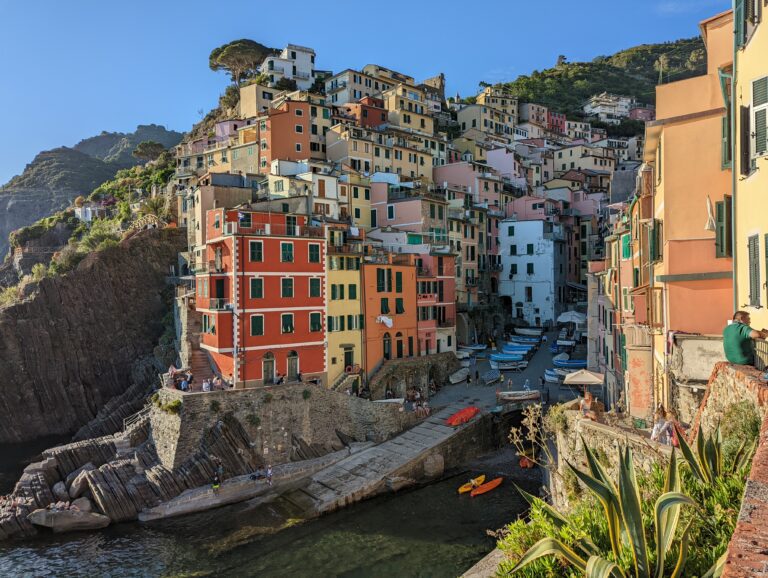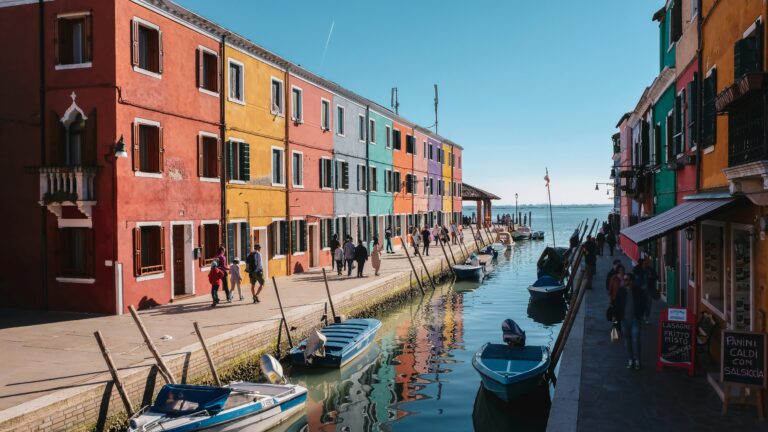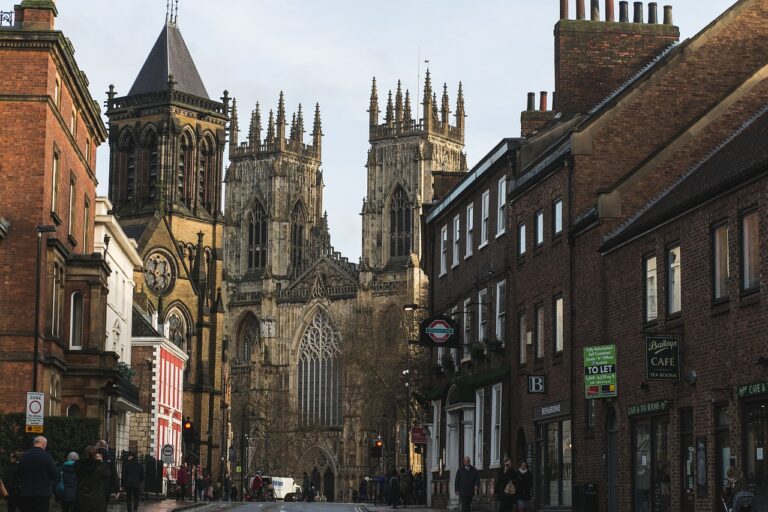Cost of Food in Norway: A Traveler’s Honest Take
However with its high wages and strong currency, Norway is one of the most expensive countries in the world and naturally, as a traveler the cost of food in Norway can add up quickly if you’re not careful. But this shouldn’t stop anyone visiting Norway with its stunning fjords, Northern Lights and stunning landscapes.
This post delve into the realities of dining in Norway. Having traveled there a few times in the last few years, I’m here to provide an honest take on (1) the average cost of food in Norway (2) what you can expect to spend (3) tips on where to find affordable yet delicious meals (4) how to make the most of your budget while enjoying Norway’s culinary delights.
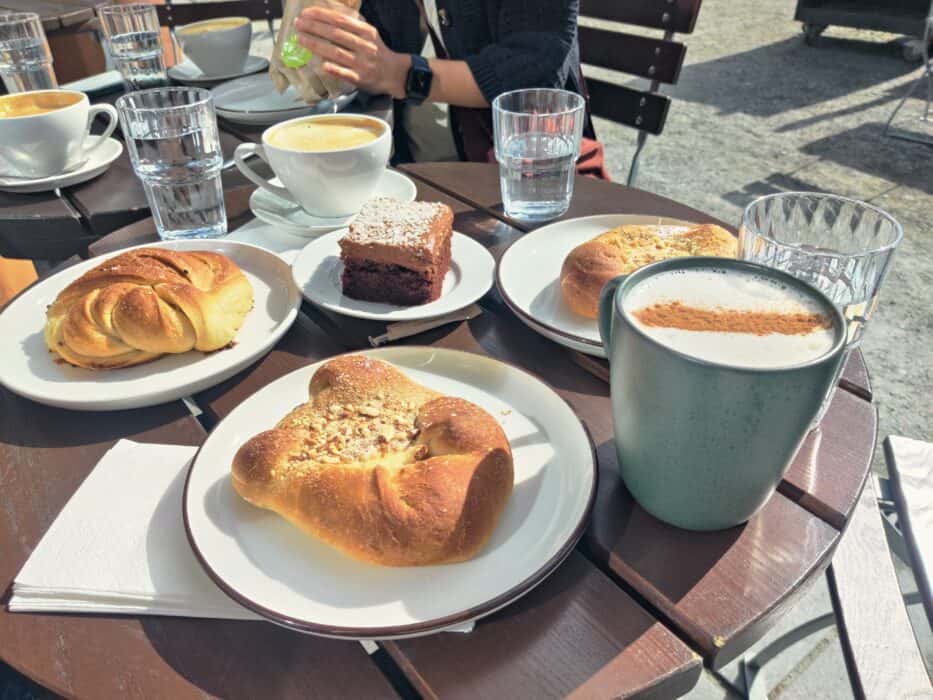
Why is food so expensive in Norway?
Food in Norway is pricey due to a mix of economic factors, geography, and local policies. High wages and strong labor protections keep the cost of food production high. With transport, and retail costs added, food is definitely expensive in this country. On the plus side, Norway is a country with stringent food safety and environmental regulations ensure top quality food – and you really fo see this translate into fresher food, but as a result this also pushes up the food prices.
With Norway’s location and climate limit agricultural output, so much of the food is imported, adding hefty transportation costs. Protective tariffs on imports to support local farming and a high 25% VAT on most goods, including food, further increase prices.
As a culture Norwegians prefer fresh, locally sourced, and high-quality foods, often organic and ethically produced, which are more expensive. Additionally, the small population means higher per-unit costs due to limited economies of scale.
Cost of Food in Norway
Here’s a breakdown of the average cost of eating out food in Norway (reflecting prices as of 2024).
Cost of Food in Norway’s Restaurants
Fast food / street food meal: 120-150 NOK ($12-15)
Casual café meal: 150-250 NOK ($15-25)
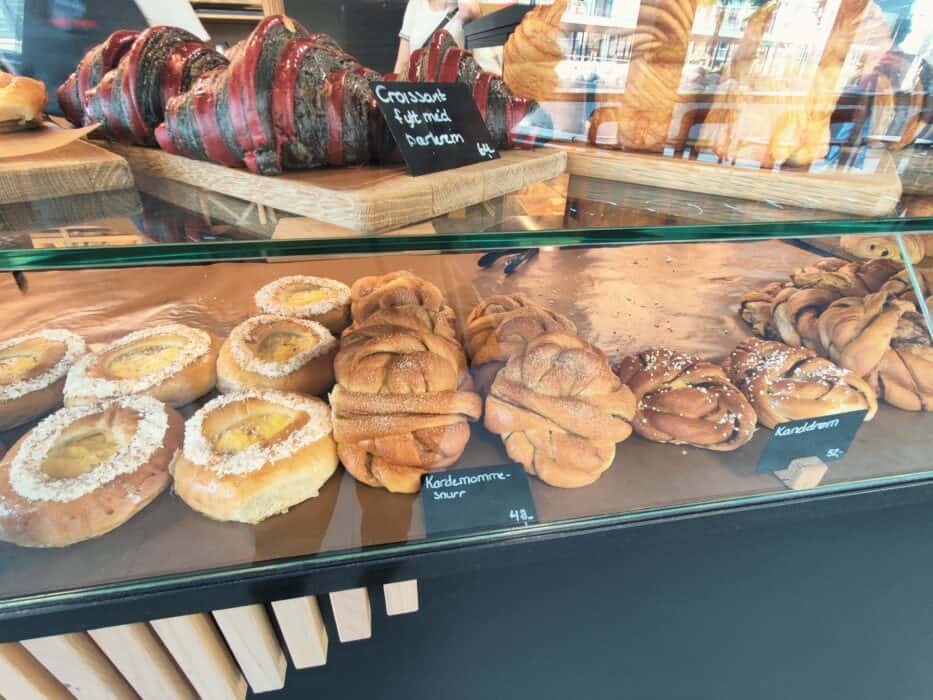
Mid-Range Meal: Three-course meal for two at a mid-range restaurant: 700-1200 NOK ($70-120)
High-End Dining: Fine dining/ upscajle restaurant: 1200-2500 NOK ($120-250) per person
Cost of Typical Norwegian Dishes in restaurants
Lutefisk: Dried fish (usually cod) that has been soaked in a lye sin olution, rehydrated, and cooked, resulting in a gelatinous texture, trust me this is better than it sounds. Typically served with potatoes and peas.
Cost: 250-400 NOK ($25-40) at mid-range restaurants, 400-600 NOK ($40-60) at high-end restaurants.
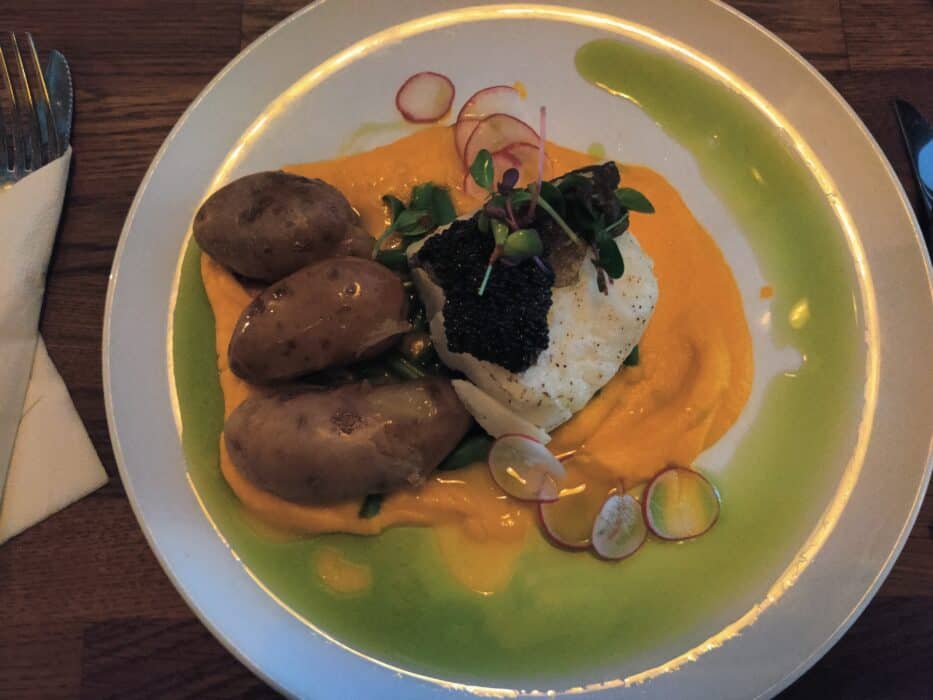
Kjøttkaker: Meatballs made from a mixture of ground beef and pork, served with brown gravy, boiled potatoes, peas, and lingonberry jam.
Cost: 150-250 NOK ($15-25) at mid-range restaurants, 250-400 NOK ($25-40) at high-end restaurants.
Reindeer Steak: A tender and flavorful cut of meat from reindeer, often grilled or pan-fried, and served with root vegetables and a rich sauce.
Cost: 300-500 NOK ($30-50) at mid-range restaurants, 500-800 NOK ($50-80) at high-end restaurants.
Rakfisk: Thai is a type of fermented fish, usually trout, traditionally eaten with flatbread, sour cream, onions, and potatoes.
Cost: 200-350 NOK ($20-35) at mid-range restaurants, 350-500 NOK ($35-50) at high-end restaurants.
Bacalao: Is a salted cod stew with tomatoes, onions, and olives, often served with potatoes.
Cost: 200-350 NOK ($20-35) at mid-range restaurants, 350-500 NOK ($35-50) at high-end restaurants.
Cost of Norweigan Desserts
- Kransekake (almond ring cake): A slice of this at a cafe would cost Slice at a cafe would cost about 50-80 NOK ($5-8)
- Skillingsboller (cinnamon bun): At a bakery or café this would typically cost 30-50 NOK ($3-5). (I personally recommend the Cardamom bun over the Cinnamon bun, but you will find both in plenty of bakeries!)
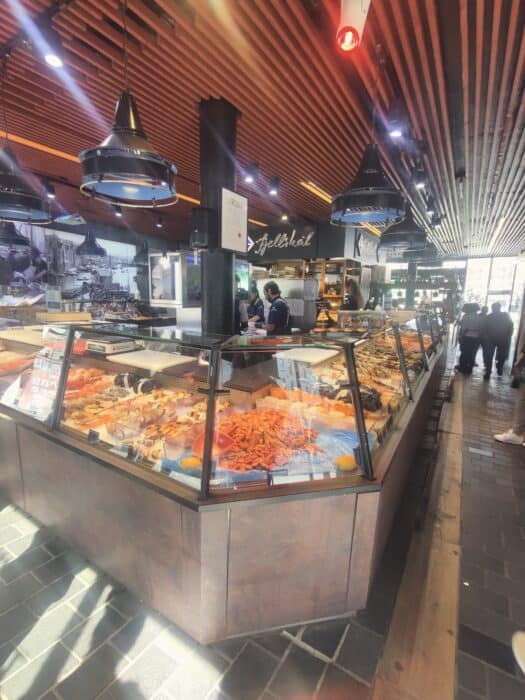
Cost of Grocery items in Norway
Below is the cost of some typical grocery items in supermarkets across Norway.
- Milk (1 liter): 20-25 NOK ($2-2.50)
- Bread (500g loaf): 25-35 NOK ($2.50-3.50)
- Eggs (12): 35-50 NOK ($3.50-5)
- Cheese (1 kg): 100-150 NOK ($10-15)
- Chicken breast (1 kg): 120-180 NOK ($12-18)
- Apples (1 kg): 30-45 NOK ($3-4.50)
- Potatoes (1 kg): 20-30 NOK ($2-3)
Alcohol Prices in Norway
I personally didn’t drink any beer in Norway, but find beer and big macs are such a universal language for gauging cost of food, drinks and inflation in a country so I’m always curious about the comparing this. So how much does a beer cost in Norway?
Cost of Beer in Norway
1 pint in a bar: 90-120 NOK ($9-12)
1 pint in stores and supermarkets: 30-50 NOK ($3-5)
Cost of Wine in Norway
Bottle of wine (mid-range):150-300 NOK ($40-80) at a bar or restaurants
Wine by the glass
Mid-range wine: 80-120 NOK ($8-12) per glass.
Higher-end: 120-180 NOK ($12-18) per glass.
Cost of Non-Alcoholic drinks in Norway
Coffee at a café: 30-50 NOK ($4-6)
Bottled water: 20-30 NOK ($2-3)
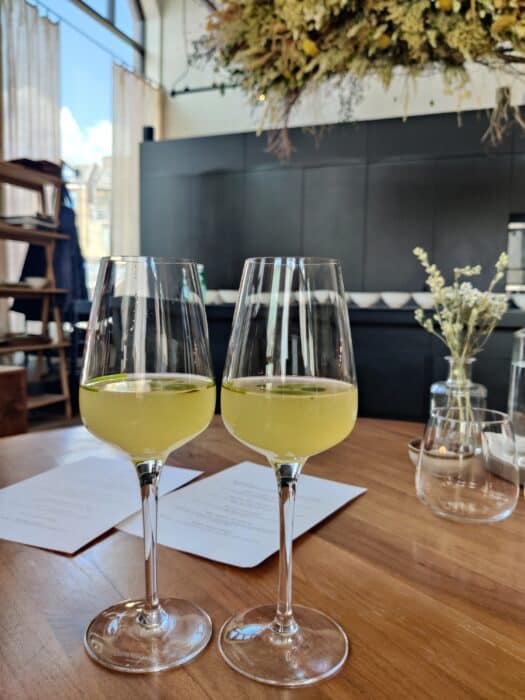
Cost of Norwegian Drinks
Akvavit is a traditional Scandinavian spirit that is infused with herbs and spices like caraway and dill, typically enjoyed as a shot during festive occasions or with traditional meals. This is one that a lot of the locals recommend, but I personally think its an acquired taste!
Cost: 90-150 NOK ($9-15)
Kaffekarsk: A traditional coffee drink mixed with moonshine or vodka.
Cost: Depends on the cost of the coffee and spirits used, but typically around 50-100 NOK ($5-10) per serving when made at home.
Gløgg:A traditional Norwegian mulled wine, especially popular during Christmas and must try at Norwegian Christmas markets!
Homemade: Ingredients cost around 100-200 NOK ($10-20) for a batch.
Pre-made in stores: 50-100 NOK ($5-10) for a bottle.
Average Daily Cost of Food in Norway
The below are average costs spend on food in a day, assuming you eat out all 3 meals – breakfast, lunch and dinner.
Mid-Range Traveler
Breakfast:Café breakfast (e.g., coffee and pastry): 50-80 NOK ($5-8)
Lunch:Mid-range restaurant (e.g., soup, salad, or main course): 150-250 NOK ($15-25)
Dinner:Mid-range restaurant (e.g., two-course meal): 250-400 NOK ($25-40)
Total per day: 450-730 NOK ($45-73)
High-Range Traveler
BreakfastHotel or upscale café breakfast: 80-150 NOK ($8-15)
LunchFine dining restaurant (e.g., three-course meal): 300-500 NOK ($30-50)
Dinner:High-end restaurant (e.g., gourmet meal): 500-800 NOK ($50-80)
Total per day: 880-1450 NOK ($88-145)
Cost of Food in Oslo v Cost of Food in Bergen
The cost of food in Norway varies across different regions and cities, influenced by local economies and levels of tourism. Oslo, as the capital, is the most expensive, with high prices for dining out and groceries. Bergen and Stavanger also have high costs. I found this to be especially the case in tourist-heavy and central areas, such Bergen harbour frequented by large tourist cruise ships.
I found that smaller towns and rural areas offer slightly lower prices, though still high by international standards, with fewer high-end dining options but more affordable local eateries. In Northern Norway, such as Tromsø, food costs can be comparable to or higher than in southern cities. This could possibly be because the north of Norway is technically even more remote than the Southern Norweigan cities.
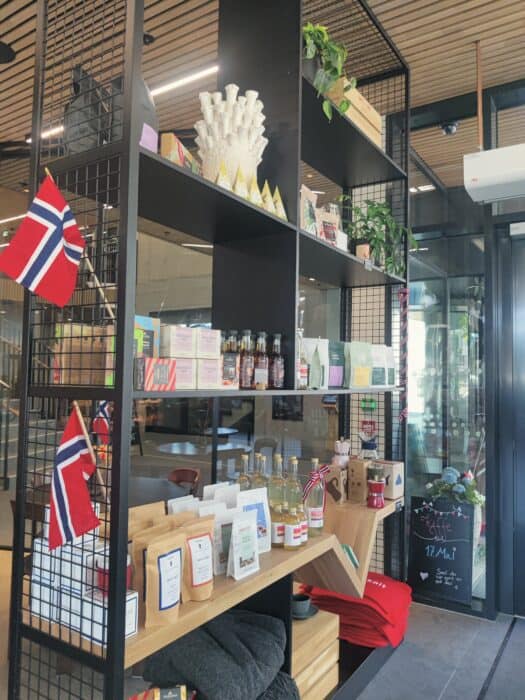
How to Budget for Food in Norway
Traveling in Norway can be expensive, but there are several strategies you can use to save money on food. Here are some tips:
1. Cook Your Own Meals
- Accommodation with Kitchens: Opt for accommodations that include kitchen facilities, such as hostels, Airbnb rentals, or vacation apartments. This allows you to prepare your own meals. While we almost booked a hotel in Bergen because it was cheaper on Booking.com, we realised it was actually more economical to book somewhere slightly more expensive with a kitchen, because making a few of our own meals would actually save us significant money over a few days.
- Grocery Stores: I found these are the most common grocery stores in central areas in most Norwegian cities – Rema 1000, Kiwi, or Coop
2. Eat Like a Local
- Local Markets: Visit local markets for fresh and often cheaper produce. Farmers’ markets can be a great place to find affordable and high-quality food.
- Traditional Foods: Some traditional Norwegian foods, like brunost (brown cheese) and flatbrød (flatbread), are relatively inexpensive and widely available. I have to say I was not a fan of brown cheese, but having tried a few different versions now, I can say some are definitely better than others. Personally I’ve found Brown cheese block somehow just tastes better than the pre-sliced vesion!
3. Lunch Specials
- Midday Deals: Many restaurants offer lunch specials, which are significantly cheaper than dinner menus. Look for “dagens rett” (dish of the day) for the best deals.
- Buffets: Some places offer buffet-style meals, particularly for lunch, which can be a cost-effective way to eat out.
4. Fast Food and Street Food
- Affordable Options: Consider fast food chains, local kebab shops, or street food vendors for a cheaper meal option. A hot dog (pølse) from a convenience store can be a quick and inexpensive meal.
- Bakery Goods: Bakeries often sell affordable pastries, sandwiches, and buns that can serve as a meal or a snack.
A holiday in Norway is entirely possible whilst enjoying its culinary delights without breaking the bank Just make sure to plan ahead by choosing accommodation with kitchens and grocery stores nearby. Explore local markets and street food for traditional dishes like pølse and fiskekaker, and take advantage of lunch specials and discounts. Balance dining out with cooking simple meals, and visit specific famous food spots for an authentic experience.
Are you heading to Norway?
Here are some posts you may find useful
– Vidden to Bergen Hiking Trail
– Hiking Trolltunga in Norway – The Ultimate Travel Guide
– Pust Sauna Tromso – A Must Try Scandinavian Spa
